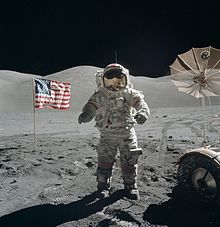
While pundits and politicians use the mass shootings in Dayton, El Paso, and Odessa to score cheap political points, I thought it would be a good time to take a deep breath and reflect on that age-old question, Why do bad things happen to good people — or, perhaps more accurately, to innocent bystanders?
To address this question, let’s start with the Universe and work our way down to Planet Earth and humankind. The most incomprehensible thing about the Universe is that it even exists. Why does there need to be a Universe at all? Why not just one galaxy? Or one planet? Or one rock? Or nothing at all?
The second most incomprehensible thing about the Universe is its vastness. The endless trillions of cosmic bodies that inhabit it are so far apart that we would know almost nothing about even our closest neighbors were it not for our knowledge of the language of the Universe, math.
Consider:
- The nearest star — repeat, nearest — to our solar system is Proxima Centauri — 4.3 light years away. For the record, a light year is 186,000 (miles/second) x 86,400 (seconds in a day) x 365 (days in a year).By my calculations, that’s more than twenty-five trillion miles, or a hundred billion times further than the distance between the earth and the moon.Not exactly a good bet for a Sandals vacation, given that a 21st century spaceship would take at least 25,000 years to get there. Or, if we could ramp that up to a futuristic spaceship that could travel at the speed of a million miles per hour, we could cut the time down to about 6,000 years.
- As to our own little solar system — which is just one of trillions of such systems in the Universe — it’s still so big that no one will ever reach its outer edge. Although we cannot be certain of the exact distance, we know that it has to be at least three billion miles or so from where we reside.
- Of course, the Universe is another thing altogether. The mathematically visible Universe is said to be a million million million million miles across. That’s 1,000,000,000,000,000,000,000,000 miles. However, most scientists suspect that it’s really millions of times bigger than this.
- There are 200 to 400 billion stars in the Milky Way galaxy alone, and there are perhaps as many as 150 billion other galaxies in the known Universe.
The reality is that it’s impossible for the human mind to comprehend the vastness of the Universe. The spaces between the planets, stars, and galaxies are far too great to be navigated by intelligent life, at least via any mode of travel that we understand today.
Back here on our own little world, you and I, on average, are comprised of seven billion billion billion atoms, but no one has a clue as to what caused these atoms to come together in just the right way to create us. Nor do we know why atoms even exist. Further, after having gone through all the trouble to make you, the atoms that formed you are dismissive of your existence.
That’s right, we’re nothing more than a collection of atoms that will someday desert us, at which time we will longer exist in human form. But even though you disappear, the atoms that formed you go on to make up other things. Strangely, those atoms are never alive in any sense that we understand, which, by secular standards of logic, makes no sense at all.
Which brings us to mankind’s eternal question: What is the purpose of life? Answer: No one has a clue. Nor does anyone know why there is such a thing as a Universe or why it developed in just the right way as to make intelligent life possible. Perhaps astronaut Gene Cernan — the last man to walk on the moon — gave as good an explanation as any as to what otherwise makes absolutely no sense to the human mind:
“What I saw as I looked at the earth from the moon was that it was all too beautiful to have happened by accident. This could not have been the result of two dust particles coming together. I wanted to grab that crescent Earth, put it in my spacesuit and take it home and show it to people. Looking up at the Earth, I had the sense that I was sitting on God’s front porch.”
Gene Cernan, NASA Astronaut
Given a complete lack of evidence to the contrary, until a more logical explanation comes along, Cernan’s view sounds pretty good to me. But is the Earth really all that unique? When all is said and done, it’s still just another ball of rocks and minerals spinning around in a seemingly unremarkable solar system located in a seemingly unremarkable galaxy, which itself is located in a seemingly unremarkable part of the Universe. We know all this to be true because the human mind, compared to all other species, it is not unremarkable. It is unique.
That said, it is somewhat ironic that we know so much about the physical Universe but almost nothing about preventing manmade tragedies like mass shootings. And until that changes, notwithstanding the grandstanding of politicians, bad things will continue to happen to innocent bystanders.
So sad … and so frustrating.
ROBERT RINGER is a New York Times #1 bestselling author who has appeared on numerous national radio and television shows, including The Tonight Show, Today, The Dennis Miller Show, Good Morning America, ABC Nightline, The Charlie Rose Show, as well as Fox News and Fox Business. To sign up for a free subscription to his mind-expanding daily insights, visit www.robertringer.com. Copyright © 2021 Robert Ringer Reproduced with permission. Original article can be read Here